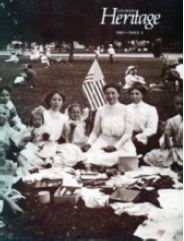 In 1983 Gov. Richard Lamm penned an article for Colorado Heritage magazine entitled “The Fourth of July in Colorado: A Perspective and a Hope.” In it he told the story of how Independence Day had been celebrated in Colorado in its early days, including how celebrations went from partisan events to unifying ones; how boosters used the holiday to promote Colorado; how commemorations of Independence Day during the Civil War and the two World Wars were somber rather than celebratory; and how the completion of the State Capitol in 1890 brought with it one of the grandest 4th of July celebrations in the state’s history.
In 1983 Gov. Richard Lamm penned an article for Colorado Heritage magazine entitled “The Fourth of July in Colorado: A Perspective and a Hope.” In it he told the story of how Independence Day had been celebrated in Colorado in its early days, including how celebrations went from partisan events to unifying ones; how boosters used the holiday to promote Colorado; how commemorations of Independence Day during the Civil War and the two World Wars were somber rather than celebratory; and how the completion of the State Capitol in 1890 brought with it one of the grandest 4th of July celebrations in the state’s history.
The article continues with stories and photos of parades, orations, picnics, and other celebrations from across the state through to the time of Lamm’s writing. He concludes the article with the sentiment,
This issue of Heritage also includes an essay on an exhibit then showing at the Colorado History Museum. “Landmarks of Liberty” offered “a rare opportunity for Coloradans to examine firsthand not only the Declaration, the Constitution, and the Bill of Rights*, but also works of art, correspondence, maps, and Revolutionary War artifacts.” You can check out this and other issues of Colorado Heritage and its predecessor, Colorado Magazine, from our library. Also search our library’s web catalog for more writings of Governor Lamm, including Copernican Politics; The Price of Modern Medicine; and Cooperative Strategies for the Developing West. Also available are Lamm’s executive orders, proclamations, state-of-the-state addresses, and other documents.

- How to Spot the Differences Between Eagles and Hawks - August 16, 2021
- How Transportation Projects Help Tell the Story of Colorado’s Past - August 9, 2021
- Time Machine Tuesday: The Night the Castlewood Canyon Dam Gave Way - August 3, 2021